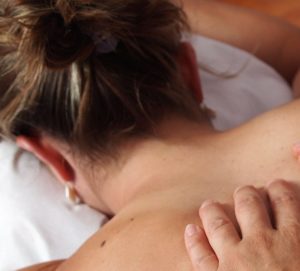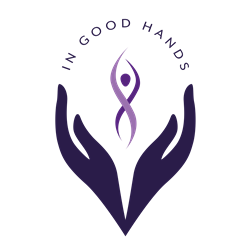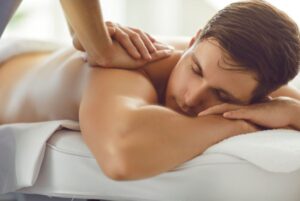The Difference Between Sports Massage and Regular Massage
Understanding Two Distinct Approaches to Muscle Care
Introduction
Massage therapy offers a range of benefits, but not all massages are created equal. Two popular types—sports massage and regular (or Swedish) massage—differ significantly in their technique, purpose, and benefits. Understanding these differences can help you choose the right treatment for your needs and goals.
Purpose and Technique
Sports massage is designed specifically for those who are physically active, whether professionally, recreationally, or occupationally. Its main aim is to enhance athletic performance, aid in recovery, prevent injury, and address specific muscle issues related to exercise or repetitive movement.
- Targeted Treatment: Sports massage focuses on particular muscle groups that are stressed or overused due to physical activity.
- Techniques: Techniques may include deep tissue work, stretching, trigger point release, and compression, all tailored to the client’s sport or activity.
- Timing: It is often scheduled before or after major athletic events, or during intense training periods.
- Goals: The primary objectives are to promote optimal muscle performance, speed recovery, prevent injuries, and reduce muscle soreness.
- Techniques: Common techniques include long, flowing strokes, kneading, circular movements, and gentle tapping.
- Pressure: The pressure is usually lighter and less intense than in sports massage.
- Goals: The focus is on reducing stress, promoting relaxation, and improving well-being, rather than addressing specific muscle injuries or performance.
Key Differences
| Aspect | Sports Massage | Regular Massage |
| Purpose | Enhance performance, prevent injuries, rehabilitate muscles | Promote relaxation, reduce stress, improve general wellness |
| Techniques | Deep tissue, stretching, trigger point, compression | Long strokes, kneading, circular movements, light tapping |
| Pressure | Moderate to deep, focused on problem areas | Light to moderate, more generalized |
| Audience | Athletes, active individuals, those with repetitive strain | Anyone seeking relaxation or stress relief |
| Timing | Before/after events, during training or rehabilitation | Anytime, as part of self-care or relaxation routine |
Choosing the Right Massage for You
If you are an athlete, fitness enthusiast, or have specific muscle concerns from physical activity, a sports massage may offer the focused treatment you need. If your goal is general relaxation and stress relief, a regular massage is likely the better option.
Understanding these distinctions ensures you receive the most benefit from your massage experience, tailored precisely to your body’s needs and your lifestyle.
When is a good time to get a massage
Knowing when to schedule a sports massage can make a significant difference in how your body feels and performs. Ideally, you might consider booking a session before a major athletic event to prepare your muscles and reduce the risk of injury, or afterward to aid in recovery and minimise soreness. Sports massage is also beneficial during periods of intense training, when your muscles are under extra strain and need added support. Even if you’re not a competitive athlete, regular sessions can help address chronic tension, muscle stiffness, or discomfort from a physically demanding job or active lifestyle. Ultimately, the best time for a sports massage is when you feel muscle tightness, fatigue, or when you want to support your body’s recovery and performance.
Why Sports Massage Is a Good Option
Sports massage stands out as an excellent choice for sporty people and anyone seeking a more targeted, focused massage to help specific issues. Unlike general relaxation massage, sports massage targets the specific needs of active bodies, focusing on areas of tension and stress caused by physical activity. Whether you’re a professional athlete, a fitness enthusiast, or someone recovering from exercise, the benefits of sports massage extend far beyond simple relaxation.
By addressing muscle imbalances, promoting recovery, and preventing injury, sports massage offers a proactive approach to maintaining physical well-being. Its techniques are designed to promote optimal muscle performance, speed up recovery after strenuous workouts, and help individuals maintain flexibility and strength. Regular sessions can support your training goals, reduce downtime due to injury, and contribute to overall muscle health.
How Sports Massage Supports Muscle Health
Muscle Tension Relief
Reduces muscle tightness. It helps relax contracted muscles. This can relieve pain and discomfort.
Improved Blood Circulation
Massage boosts blood flow to affected areas. Better circulation brings more oxygen and nutrients to the muscles. This promotes healing.
Reduced Muscle Soreness
Can decrease post-exercise soreness. It helps flush out lactic acid. Muscles recover faster.
Enhanced Flexibility
Regular massage increases muscle flexibility. It reduces the risk of injury. Range of motion improves.
Scar Tissue Breakdown
THE BENEFITS
REDUCES MUSCLE TENSION
It helps relax contracted muscles. This can relieve pain and discomfort.
Improved Blood Circulation
Massage boosts blood flow to affected areas. Better circulation brings more oxygen and nutrients to the muscles. This promotes healing.
Reduced Muscle Soreness
Can decrease post-exercise soreness. It helps flush out lactic acid. Muscles recover faster.
Enhanced Flexibility
Regular massage increases muscle flexibility. It reduces the risk of injury. Range of motion improves.
Scar Tissue Breakdown
Massage helps break down scar tissue. This can restore normal movement. It also lowers stiffness.
Injury Prevention
By reducing tightness and improving mobility, massage prevents injuries. It keeps muscles healthy and balanced.
Stress Reduction
Calms the nervous system. Lower stress levels help muscles relax. Recovery is more effective.
This site shows some good stretches to do to keep the muscles healthy.


